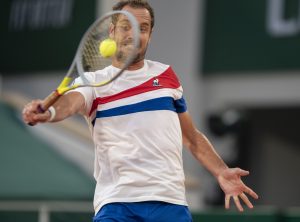Requiescat in pace, Davis Cup. What’s up, Piqué Cup*!
The initiative by investment group Kosmos to tear apart reform the historic national team competition was approved on Thursday in Orlando (Florida, USA) by a wide margin, with 71 percent of the 220 members of the International Tennis Federation [ITF] in favor of the overhaul, according to the Associated Press.
Under the new format, 18 nations will compete in a World Cup of Tennis tournament at a neutral site every November. It is rumored either Lille (France) or Madrid (Spain) will host the 2019 edition.
As always, there are pros and cons, depending on which angle you look at the prism from. Here’s my take.
The Good
Top players should be enticed to participate
One of the perennial downsides of the Davis Cup in the 21st century was the lack of household names playing regularly, mostly in away ties. From now on, a maximum two-week commitment per year seems feasible. Maybe even just one week, since all semifinalists from the previous edition get an automatic slot in the following year’s main event.
However, I’m not convinced the “Big Four,” all on the wrong side of 30, are going to extend their season into mid-to-late November after a grueling 60-70 match campaign. Maybe they do in year one, but I’m skeptical down the road.
Massive financial boost
Kosmos and the ITF agreed to a $3 billion, 25-year contract. Players will be battling for Grand Slam-level prize money. That’s a big plus.
TV friendly setup
Every four years, the planet literally stops for the World Cup. Yes, not the best comparison as tennis is a niche sport several galaxies behind football/soccer in the pecking order, but this revamped format will draw the attention of the casual fan. Golf’s Ryder Cup or even last year’s Laver Cup suggest that short tournaments generate more buzz nowadays than the obsolete Davis Cup worldwide. Maybe we should rename the Davis Cup to November Madness** rather than Piqué Cup*.
The shorter attention span of the newest generation (looking at you Novak Djokovic) is a whole different story I will not dig deep into. Don’t youngsters binge watch Netflix for a full day? Don’t tell me they can’t stand top-notch tennis for a few hours.
Home-or-away clashes will not be completely abolished
Let’s face it, fans love cheering for their team on home soil. Eradicating these (as Kosmos initially intended) would cross the red line. Starting in February 2019, 24 nations will square off in 12 home-or-away clashes hoping to secure their November Madness** berth. The remaining six vacancies will go to the previous year’s semifinalists, plus two wild cards.
The (very) Bad
History is too valuable to be obliterated
The ITF just set 100+ years of tennis history on fire. Even stubborn fans would agree that the Davis Cup needed certain tweaks to keep up with the ever-changing society… but not a gargantuan overhaul like this. Lleyton Hewitt, one of the most vocal ambassadors of the traditional Davis Cup, must be fuming. Nothing will be the same. Gazillions of dollars can’t replace the legendary aura of the Davis Cup. Historical comebacks fueled by the home crowd will be tough to replicate on a neutral site. Heck, David Ferrer, who can’t beat his own shadow right now, punched Spain’s ticket to the 2018 semifinals with a huge five-set win over Phillip Kohlschreiber (Germany). The packed bullring in Valencia played a big factor on that April victory. Home crowds made the Davis Cup special. I expect November Madness** to be like a regular tournament in that regard.
*The Kosmos group is headlined by FC Barcelona star defender Gerard Piqué.
**March Madness is the unofficial name of the NCAA Division 1 basketball tournament, a do-or-die 68-team event that crowns the best collegiate squad in the United States.






